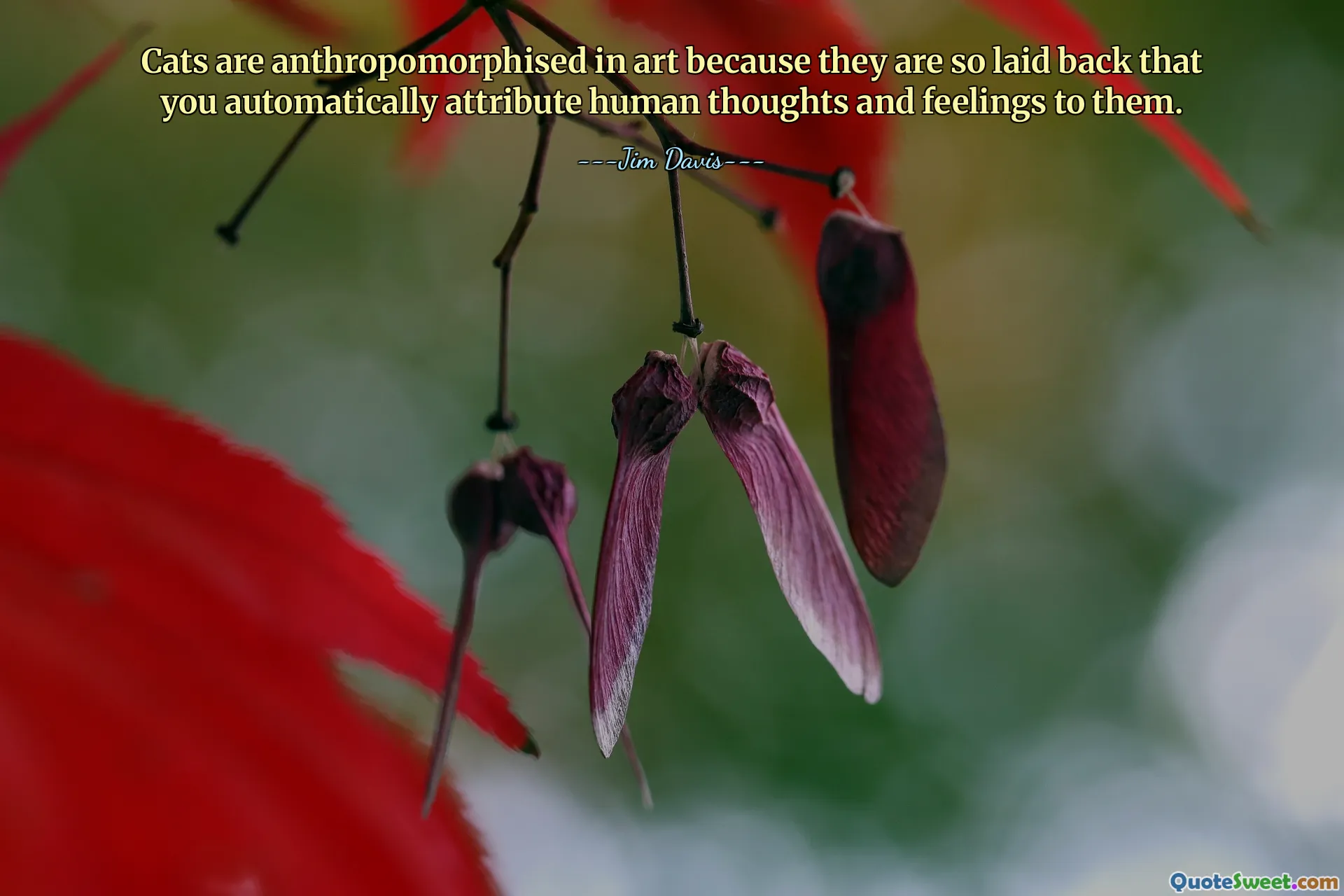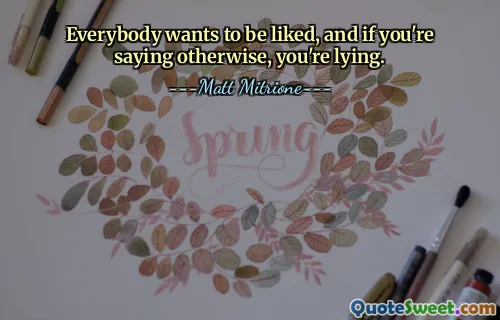
Cats are anthropomorphised in art because they are so laid back that you automatically attribute human thoughts and feelings to them.
The quote touches on a fascinating aspect of human perception and artistic expression. Cats have long been favored subjects in art and literature due to their enigmatic and serene nature. Their relaxed demeanor often leads humans to project human emotions and intentions onto them, a psychological tendency known as anthropomorphism. This inclination stems from our desire to find relatable qualities in the animals we observe, especially when they display calmness and independence, traits often admired or romanticized. In artistic representations, this tendency results in cats being imbued with personality, personality that might not inherently exist in their silent, contemplative expressions but is instead a reflection of our own interpretations. Such portrayals serve not only as artistic commentary but also deepen our emotional connection to these creatures. They symbolize sophistication, mystery, independence, and even spiritual symbolism, depending on the cultural context. The relaxed cat acts as a blank canvas onto which we project human characteristics, enriching the narrative or aesthetic value of the artwork. This phenomenon reveals much about how humans decode the world around them—by attributing familiar qualities to the unfamiliar or silent to make sense of it. Ultimately, the ability to see ourselves in cats fosters empathy and understanding, bridging the gap between species through art and perception. It demonstrates how much of our understanding of animals is shaped by our emotional projections, transforming simple images of animals into complex symbols loaded with personal and cultural meaning.











